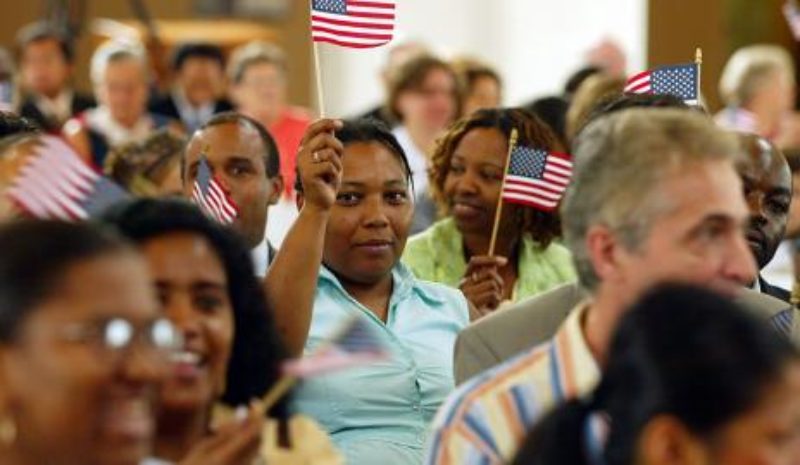Escaping Extremes: Climate Change’s Role in Displacement and Migration
In 2019, a family of tomato farmers in Mexico experienced a scorching summer.
There was “too much sun, too much heat – the whole crop dried up. We lost everything,” the mother of the family said, according to a 2023 report from the Human Security Initiative, the U.S. Committee for Refugees and Immigrants, and the International Refugee Assistance Project.
In years past, heavier than normal rains flooded the family’s tomato plants, leaving them nothing. For this family, these weather events led to an unpredictability that not only threatened their livelihood but endangered their lives.
In this part of Mexico, violence and organized crime are widespread. For the cartels and gangs demanding extortion payments in their community, excuses of drought or flood did nothing to stymie their threats. “Sometimes you can’t earn anything. Where can one get money when there’s nothing to sell? The gangs keep asking for their bribes, and they don’t care about these things. If you don’t pay, they kill you. They killed a 50-year-old man working in the tomato fields,” the mother continued.
Due to their failed crops, the family was unable to pay the gangs. Gang members killed the woman’s brother and uncle and kidnapped her husband in retribution. The remaining members of the family had no choice but to flee for fear of further violence.
Unfortunately, heat waves, floods, and stories like this family’s are becoming more and more common as we face the consequences of human-caused climate change. 2023 was the hottest year on record, with global average temperatures reaching 1.5 degrees Celsius above pre-industrial levels.
This number is significant for a few reasons. At the 2015 climate talks in Paris, almost 200 nations signed a treaty stating that they would work to keep global temperatures from exceeding 2 degrees Celsius above pre-industrial levels, and try to keep the temperature below 1.5 degrees Celsius.
Scientists determined that keeping the temperature threshold below 1.5 degrees could mean the survival of coral reefs, less deadly heat waves, less intense sea level rise, and fewer floods, wildfires, droughts, and hurricanes.
If 2023 is an indicator, we are well on our way past that threshold, and into unprecedented territory.
Climate disasters do more than flood cities, burn down forests, and destroy crops — as if that wasn’t devastating enough. As the family of farmers in Mexico experienced, climate change exacerbates other root causes of displacement, such as poverty, marginalization of Indigenous populations, threats of violence and extortion, and other types of persecution that force people to leave their homes to find safety.
In short, climate change is a “threat multiplier”— a factor that heightens the vulnerability of impacted communities by undermining the basic facets of human safety including food, shelter, and water.
Climate change-related events are forcing people from their homes at a rapid pace and, as of now, the law hasn’t kept up with protecting them.
In 2022, 32.6 million people were forced to move within their countries, or internally displaced, by disasters. A whopping 98% of those people were forced out by weather-related events. Research estimates that more than 216 million people could be displaced as a result of climate disaster by 2050.
Despite these figures, there are no clear pathways to protection for climate-displaced people under U.S. law, even as climate change is predicted to be one of the greatest human development challenges of the next several decades.
As of now, the majority of climate displacement happens within countries’ borders. However, as weather events continue to intensify, instances of cross-border forced migration are likely to increase. There needs to be a clear, legal path to protection for those displaced by climate-related disasters.
That is why Human Rights First endorsed the “Climate Displaced Persons Act” reintroduced in 2023 by Senator Markey (D-Mass) and Congresswoman Velázquez (NY-07). The bill provides a more equitable immigration pathway to the United States for people displaced by climate change and critical support for people affected by climate disasters internationally. Join us in urging Congress to take action to pass this and other related legislation.
In addition, in 2022 Human Rights First submitted to the U.N. Special Rapporteur on Protection of Human Rights in the Context of Climate Change recommendations on asylum, resettlement, or other humanitarian protections for people displaced by climate change. We called on U.N. States to “significantly expand opportunities for safe migration” and take concrete steps to protect the human rights of people displaced by climate disasters.
Human Rights First also recommended that the United States stop all illegal pushback policies (like the asylum ban), ensure access to asylum, and enact “complementary protection processes and safe pathways that provide rights-respecting, durable solutions for climate-displaced people.”
The overlapping and intersecting consequences of how climate change will affect human migration are still developing. But we do know that climate disaster events can be both the key driver in migration and an exacerbating factor in other situations that force people to leave their homes.
Across the world, subsistence farmers who rely on their crops are watching as their land turns to desert, while fishermen struggle to meet their catch quotas due to rising ocean temperatures and acidification. People living on small island states like the Maldives are watching as their homes literally get swallowed by the sea. And people like the tomato farming family in Mexico are in dangerous situations—exacerbated by factors far out of their control.
We need global policies that acknowledge the wide variety of experiences of people displaced by climate disasters, and concrete outcomes to meet the dire need.
In 2021, President Biden said the United States has a “compelling national interest in strengthening global protection for individuals and groups displaced by the impacts of climate change.” This Earth Day, let’s take that seriously and prioritize taking action to protect people displaced by climate change.
